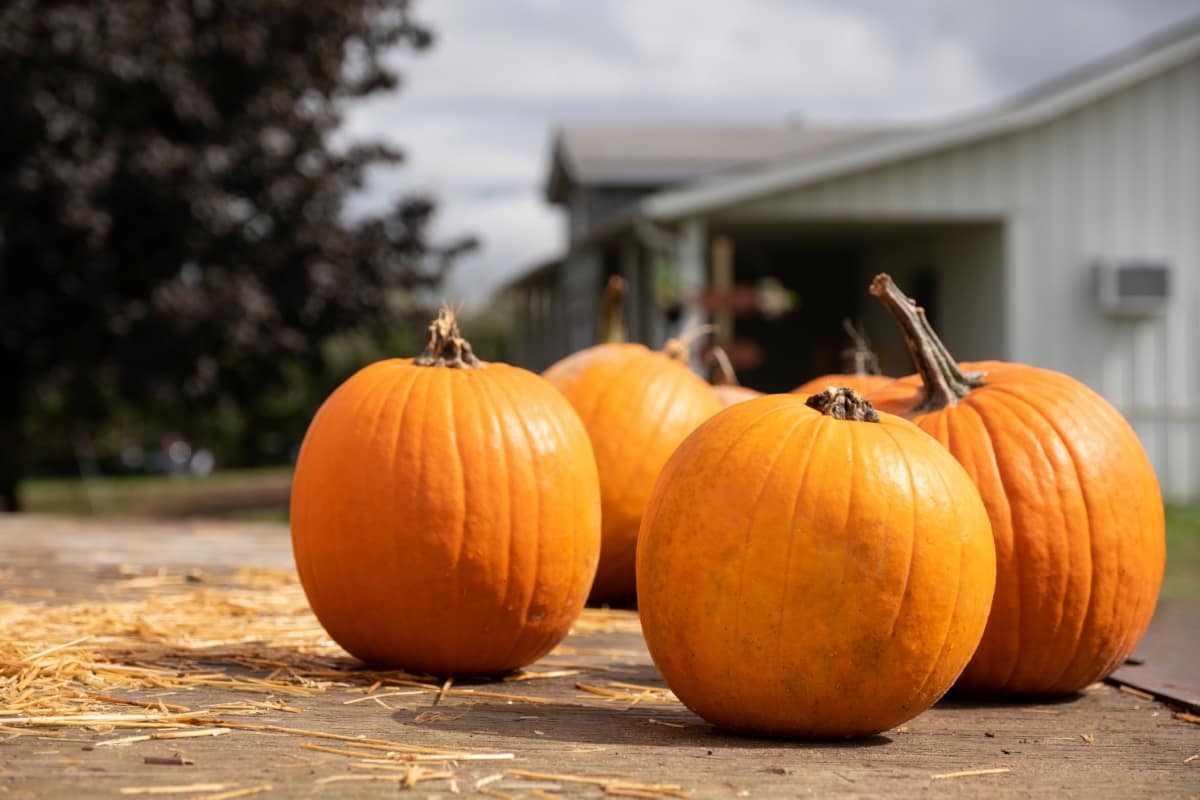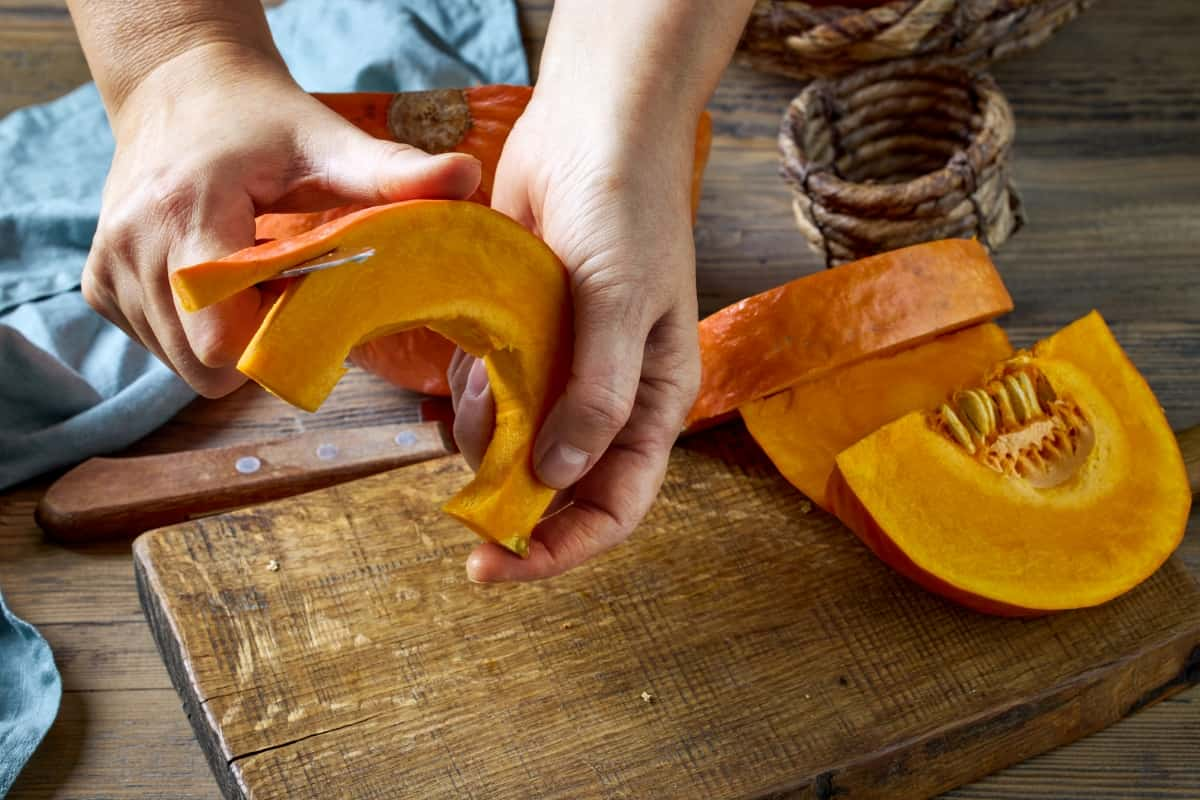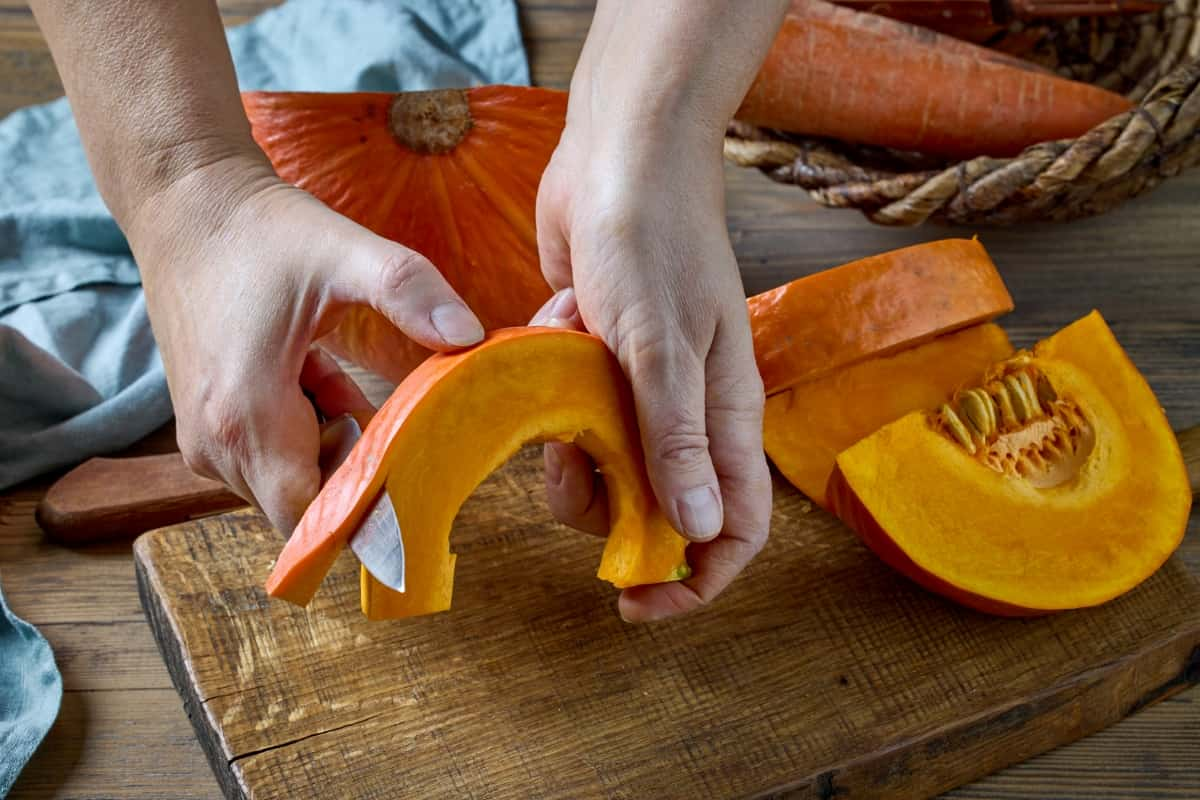Learning how to use pumpkin peel in your garden for great results is a valuable skill for any gardener. Often discarded as waste, pumpkin peels can be transformed into a nutritious and eco-friendly addition to your garden. Rich in nutrients, they can serve as a natural fertilizer, enhancing soil structure and promoting vigorous plant growth. In this article, we’ll explore various methods to utilize pumpkin peel in your garden, from preparing it for use to making pumpkin peel tea as a soil amendment. Let’s dive into the world of sustainable gardening with pumpkin peels.

Use Pumpkin Peel in Your Garden
Benefits of Pumpkin Peel for Garden Plants
Pumpkin peel offers numerous benefits for garden plants. This natural resource is packed with essential nutrients like potassium and magnesium, which are crucial for the healthy growth of plants. When added to the soil, pumpkin peel breaks down and releases these nutrients, providing a steady supply of nourishment to your garden.
This process not only enriches the soil but also helps in maintaining moisture levels, which is particularly beneficial during dry spells. By using pumpkin peel in your garden, you’re not only recycling organic waste but also boosting the health and vitality of your plants in an eco-friendly way.
Prepare Pumpkin Peel for Garden Use
Proper preparation is key to effectively utilizing pumpkin peel in your garden. Start by cleaning the peels to remove any residue or seeds, as these can attract unwanted pests. Once cleaned, the pumpkin peels can be chopped into smaller pieces to expedite decomposition. If you have a compost pile, adding the chopped pumpkin peel can enhance the compost’s nutrient content.
You also have the option of dehydrating the peels and milling them into a fine powder. This powder can be effortlessly incorporated into the soil or applied as a top dressing for your plants. This preparation ensures that the nutrients are readily available for absorption by the plants.
Utilize Pumpkin Peel as an Organic Fertilizer
Pumpkin peel serves as a commendable organic fertilizer, providing a sustainable and economically viable substitute for synthetic fertilizers. To use it as a fertilizer, simply incorporate the prepared pumpkin peel into the soil around your plants. As the peel decomposes, it slowly releases vital nutrients, providing a long-term source of nourishment for your garden. This fertilization approach enhances soil quality and promotes the growth of beneficial microorganisms, essential for soil health and structure.
In case you missed it: Long Island Cheese Pumpkin: Growing From Seed, Uses, Benefits, Price, Size, Recipes, Origin, and History

Enhance the Soil Structure with Pumpkin Peel
Incorporating pumpkin peel into your garden soil works wonders in enhancing its structure. The organic matter from the peel improves soil aeration, making it more porous and better able to retain water and nutrients. This improved soil structure is particularly beneficial for root development, allowing plant roots to spread more easily and absorb nutrients more effectively. By regularly adding pumpkin peel to your garden, you can transform your soil into a fertile and robust foundation that supports healthy plant growth.
Promote Plant Growth with Pumpkin Peel
Pumpkin peel is a natural growth promoter for plants. The nutrients found in the peel, particularly potassium, have a substantial impact on the growth and development of plants. Potassium helps in the regulation of various plant processes, including photosynthesis and water uptake. By adding pumpkin peel to your garden, you’re directly contributing to the overall health and robustness of your plants, leading to more vigorous growth, healthier foliage, and potentially more abundant flowering and fruiting.
Utilize Pumpkin Peel Tea as a Soil Amendment
Another innovative way to use pumpkin peel in your garden is by making pumpkin peel tea. This tea serves as a gentle, nutrient-rich soil amendment. To make it, soak chopped pumpkin peels in water for a few days, allowing the nutrients to leach into the water. This nutrient-infused water can then be used to water your plants, providing them with a mild, steady supply of essential nutrients. Pumpkin peel tea is particularly useful for seedlings and young plants, offering a nurturing environment that supports their initial growth stages.
In case you missed it: All About Jarrahdale Pumpkin: Growing from Seed, Uses, Benefits, Size, Weight, Price, and History

Repel Pests with Pumpkin Peel
Pumpkin peels can be an effective, natural method for pest control in your garden. When used strategically, they can deter a variety of garden pests. To repel pests, distribute small pieces of pumpkin peel around the base of your plants. The natural compounds in the peels can be unappealing to many common garden pests, such as slugs and snails.
Additionally, burying small pieces of pumpkin peel just beneath the soil surface can help deter soil-borne pests. This method of pest control is not only eco-friendly but also adds nutrients to the soil as the peels decompose, serving a dual purpose in your garden.
Incorporate Pumpkin Peel into Mulch
Incorporating pumpkin peel into your garden’s mulch is a great way to enhance its nutritional value and moisture retention capabilities. Start by layering the pumpkin peels on the soil surface around your plants. Then, cover them with your usual mulching material, such as leaves, straw, or wood chips. This method helps in slowly releasing the nutrients from the pumpkin peel into the soil while also keeping the soil moist and well-aerated. Over time, as pumpkin peels decompose in the mulch, they enhance soil quality by continuously supplying nutrients to your plants.
Composting Techniques with Pumpkin Peel
Pumpkin peel is an excellent addition to compost piles, enriching the compost with essential nutrients. To compost pumpkin peel, mix it with other green and brown compost materials, maintaining a balance for optimal decomposition. Green materials like vegetable scraps provide nitrogen, while brown materials like dry leaves offer carbon.
In case you missed it: How Long Do Pumpkins Take to Grow: Life Cycle, Growing Stages, Flowering and Pollination

Layering these materials with pumpkin peels in your compost bin or pile helps to create a nutrient-rich compost. Regularly turning the compost ensures even decomposition and aeration, speeding up the process. Over time, the composted pumpkin peel becomes a potent, all-natural fertilizer for your garden.
Conclusion
Utilizing pumpkin peel in your garden in various ways, such as for pest control, mulching, and composting, can significantly boost your garden’s health and productivity. These simple, sustainable techniques not only recycle organic waste but also contribute to a more eco-friendly and flourishing garden environment.
- Feed Your Flock for Less: Top 10 Tips to Save on Chicken Feed
- Ultimate Guide to Ossabaw Island Hog: Breeding, Raising, Diet, and Care
- Hatching Answers: The Top 10 Reasons Your Chickens Aren’t Laying Eggs
- Eggs and Economics: Breaking Down the Cost of Raising Backyard Chickens
- Defend Your Greens: Proven Methods to Keep Iguanas Out of Your Garden
- Ultimate Guide to Cinnamon Queen Chicken: A Comprehensive Guide for Beginners
- Ultimate Guide to California Tan Chicken: Breeding, Raising, Diet, Egg-Production and Care
- Ultimate Guide to Marsh Daisy Chicken: Breeding, Raising, Diet, and Care
- 10 Types of Chicken Farming Businesses You Can Start for Profits